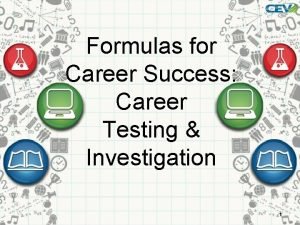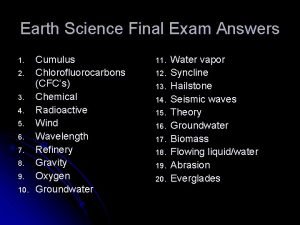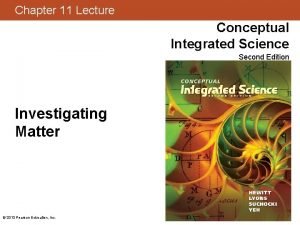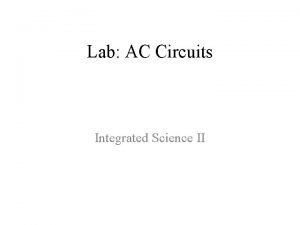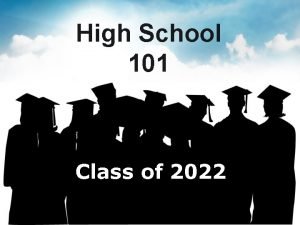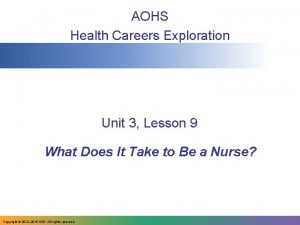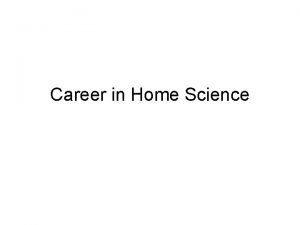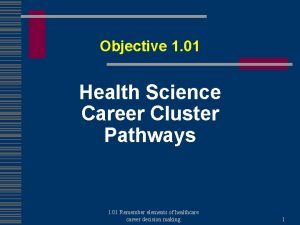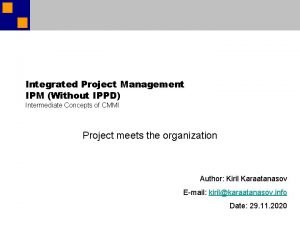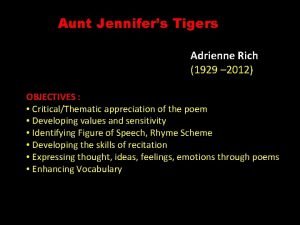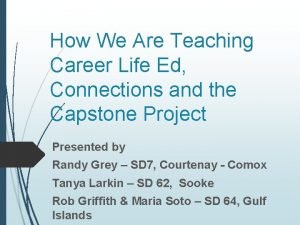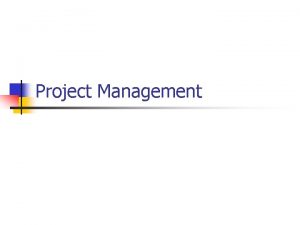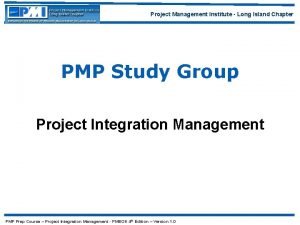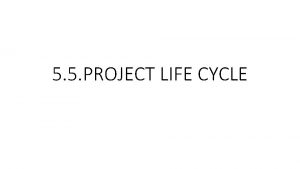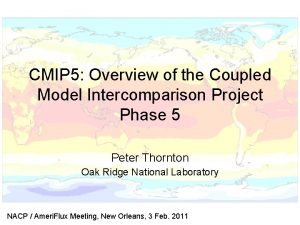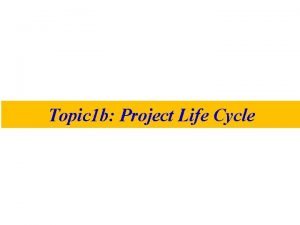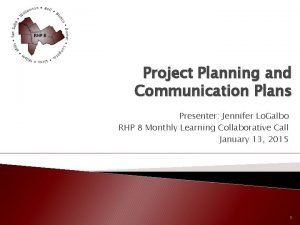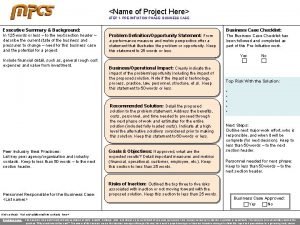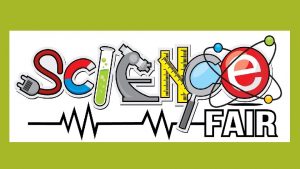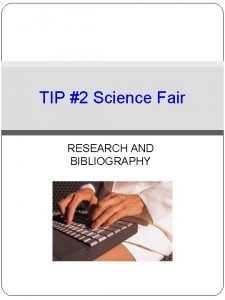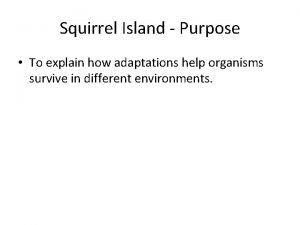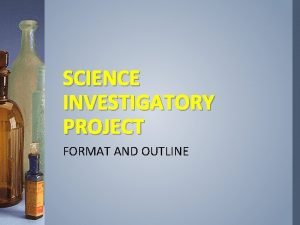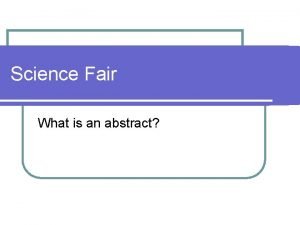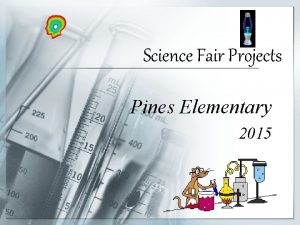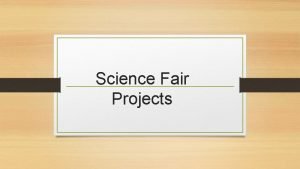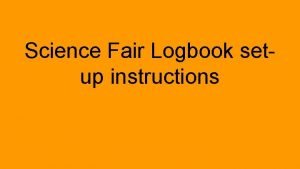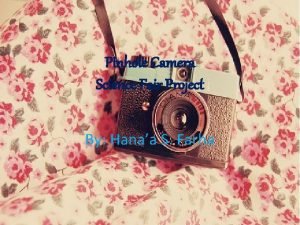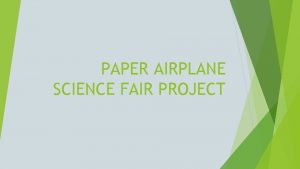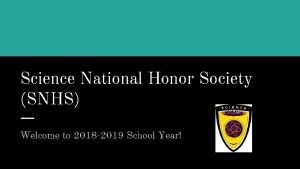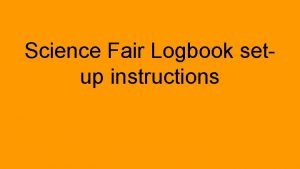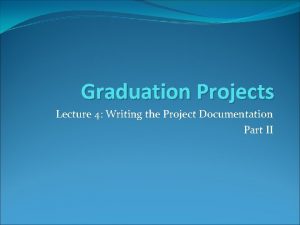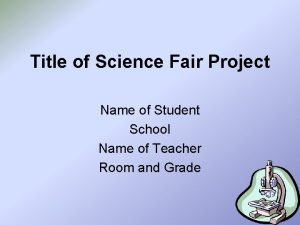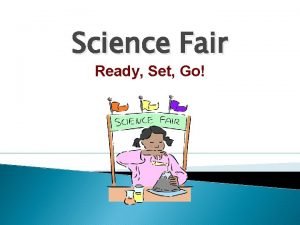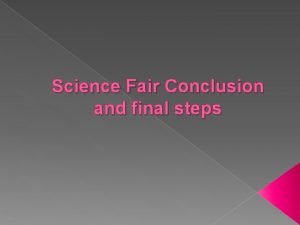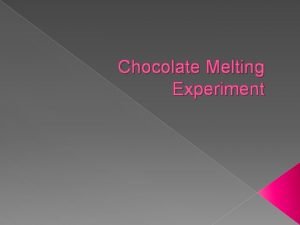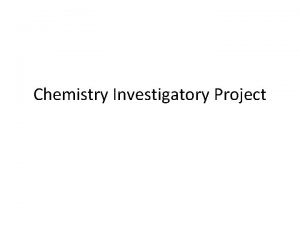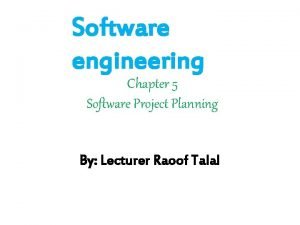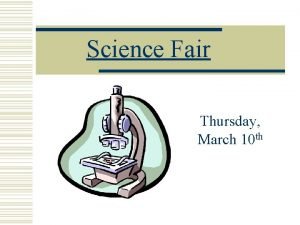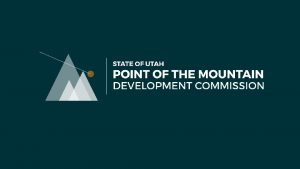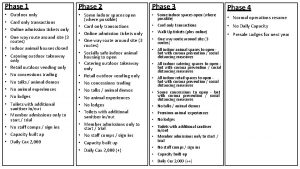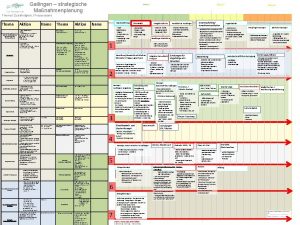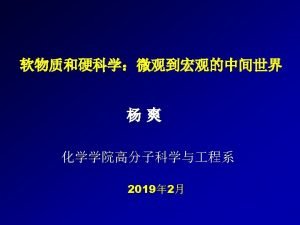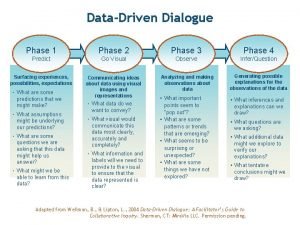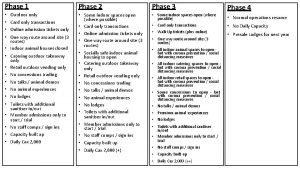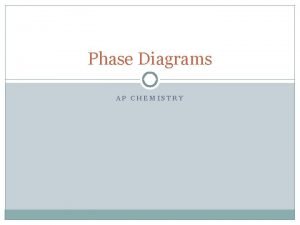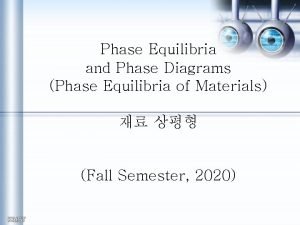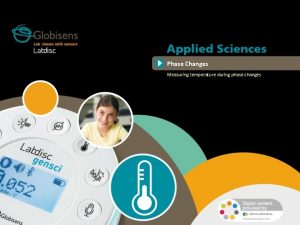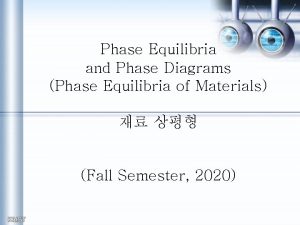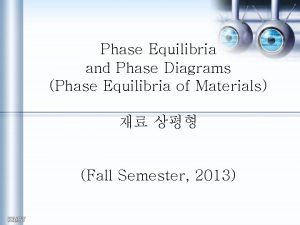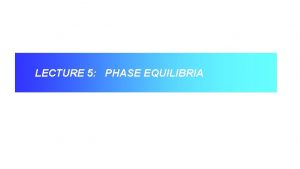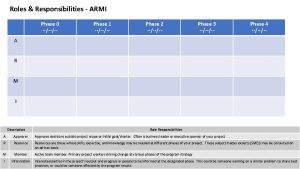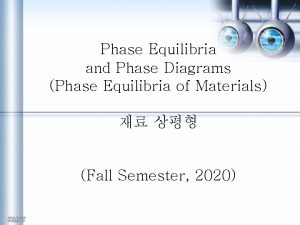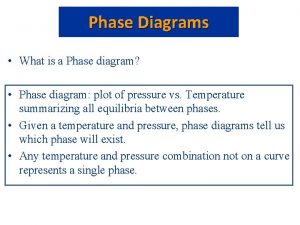Integrated Semester Project Science Career Semester Project Phase

















































































- Slides: 81

Integrated Semester Project

Science Career Semester Project Phase 1 Research, job shadow & interviews September - November Phase 2 Essay December - January Phase 3 Exhibition & presentation December - January


Phase I Interviews, Job Shadow & Research


Who are you planning on job shadowing? Share with a neighbor…


Interview Requirements • 2 interviews must be conducted with the topic of your paper. – 1 st interview can take place during the job shadow. – 2 nd interview can be via phone, email… – Initial contact does not count as an interview. • Each interview must be listed as a source in your bibliography. – Each interview gets its own citation.

Interviews • You may conduct more than 2 interviews – List each one in your bibliography. – You may interview more than one person • As long as you have 2 interviews for the person you are writing your paper on.


What does society think of teenagers/adolescents? Share with a neighbor…


Interview Sources How NOT to conduct an interview… • Appear uninformed. • Look unprofessional. • Sound uninterested. • Be boring.

Interview Sources Before you interview someone… • Research the career in great detail. • Compose interesting questions • Write “follow-up” questions for each of your interview questions. – Your questions should demonstrate an understanding of the person’s profession.


Interview Sources Sample interview question with follow-up questions… • “What college did you attend? ” – “Did you major in Pre-med? Biology? Psychology? ” – “Was there a particular professor at _____ that was a mentor for you? ” – “Would you recommend ____ to a person interested in this field? ”

Interview Sources Biographical Questions • Your questions should be about their personal life but should not be too personal to answer. • Examples: – “Was there someone in your youth that inspired you to pursue a career in dentistry? ” – “What motivated you to declare engineering as your major in college? – “Could you tell me what your education before college? What classes did you take in high school? ” – “How would you describe your personality as a teenager? As a child? ”


Interview Sources Scientific Method Questions • Need all steps in the Sci. Method in your paper. • Write simple, creative questions: – What do you do to solve problems? What steps do you take to solve them? Hypothesis, procedure – How do you collect information? Data – What factors do you have to account for when collecting information? What may “throw off” your results? Variables.

Sources • Keep track of every source that you take notes from (including interviews and job shadow). • Make sure that you have all the information you need for MLA format. • Make sure that you evaluate your source.


MLA Format

What are some good resources for MLA help? Share with a neighbor…


MLA Format • Plagiarism – to steal or pass-off the ideas or words of another as one’s own: use another’s production without giving credit. – Intellectual theft – KR Academic Integrity Policy

MLA Format In-Text Citations • Gives credit to the person who did the work. • Refers the reader to the bibliography – Always includes 1 st piece of info from bibliography. – Reader sees citation, flips to bibliography, looks down the left margin, finds source. • All facts, concrete detail, information from job shadow and/or interviews should have an in-text citation after it.


In-Text Citations • Parenthetical citations ( ) not footnotes. – Most citations contain the author’s last name and page # – Example: (Jacobs 15).

In-Text Citations Rules: • Citations must have parentheses. • Citation must be before the punctuation at the end of the sentence. • Citation includes the 1 st piece of information from the bibliography entry for that source. • If no author is known the next piece of information in the bibliography entry is used instead. • If there is no page number then you drop that part out of the citation.


In-Text Citations • • • (Smith 46) (Jones, 49). (Barley, 35) (Jacobs 39). (Rhodes, pg. 15). (Taylor, page 19)

In-Text Citations Molecular virology is probably not a field of science many people are familiar with, but microbiology is. Since microbiology, the study of microbes, is such a vast field, scientists usually specialize in one specific area. One area of choice is molecular virology, the study of viruses at a molecular level. A molecular virologist has many duties, such as examining the construction, functions, and interactions of molecules in a virus, and understanding the relationships and assembly of the virus itself. It may not seem physically demanding, but this job can be very stressful and is not for the faint at heart.

In-Text Citations Molecular virology is probably not a field of science many people are familiar with, but microbiology is. Since microbiology, the study of microbes, is such a vast field, scientists usually specialize in one specific area (“Microbiologist”). One area of choice is molecular virology, the study of viruses at a molecular level. A molecular virologist has many duties, such as examining the construction, functions, and interactions of molecules in a virus, and understanding the relationships and assembly of the virus itself (Matyas 244). It may not seem physically demanding, but this job can be very stressful and is not for the faint at heart.


In-Text Citations Alison is a perfect example. She is currently working on a project involving the study of the foamy virus. Previously, the virus was only found in primates, so it was categorized as potentially dangerous by the Centers for Disease Control (CDC), but the first human transmission has be found, which could be very dangerous. The original study of this virus was to use it for gene therapy, but the circumstances may change due to the new discovery. Alison has been gathering information and collecting data about this virus for over ten years, and is still making new findings every day. Alison enjoys her work very much, but she would not be doing what she does, if she did not fulfill the necessary skills needed to be a molecular virologist.

In-Text Citations Alison is a perfect example. She is currently working on a project involving the study of the foamy virus. Previously, the virus was only found in primates, so it was categorized as potentially dangerous by the Centers for Disease Control (CDC), but the first human transmission has be found, which could be very dangerous (Jones-Engel 1028). The original study of this virus was to use it for gene therapy, but the circumstances may change due to the new discovery. Alison has been gathering information and collecting data about this virus for over ten years, and is still making new findings every day (Yu 10/13/06). Alison enjoys her work very much, but she would not be doing what she does, if she did not fulfill the necessary skills needed to be a molecular virologist.

Bibliography Formatting • 1 st line in each citation begins at the left margin. – Each additional line in the citation is indented. • All citations are alphabetized by the first word. • The interviews are arranged according to dates.

Bibliography Helpful Hints • Each interview counts as a source! – You must include your interviews in the bibliography in order to receive credit for them. • Memorize the information needed to complete your bib. entries. • Pay close attention to format. • Need help? – – Librarians Websites Wheeler’s wiki Office hours with Wheeler.

Phase III Exhibition


Reflect upon large projects that you have done in the past… What type of visuals did you create for these projects?

Please read your visual appeal checklist…


Things to Keep in Mind… • • • Color Display of Information Artistry Overall Design / Shape Audience Appeal Rubric

Color



What can you infer about a project when you look at its use of color? Inferring: deriving meaning from hints, evidence, details, etc…

Color Sets a Mood • Orange, red, yellow = hot, spicy, attention grabbing. • Dark blue, purple, gray = somber, cool, serious. • Color palette should reflect the mood (or theme) of your project.

How to Select Colors Color Wheel • Opposite colors. • Colors that are next to each other.



Display of Information

What are some good “rules” to follow when it comes to fonts, pictures, etc… on projects?


Fonts • Compelling quotes are often displayed in a “script” font that looks somewhat like handwriting – Quotes may also be printed in a much larger font than the other information in order to draw people in from a distance. • Organize information – For instance all your facts, observations or quotes could be in different scripts. • Don’t use too many fonts.

Pictures & Images • Look for interesting pictures that best suit the mood of your project. – Example: if your project is about surgery then you could include pictures of notable surgeons, tools, surgeries, etc. . .

Pictures & Images • Create collages or interesting arrangements with the pictures – Take a portrait and copy it on a color copier using different color settings (so you get a blue copy, green copy, etc…) then arrange the copies like a Warhol painting.

Pictures & Images • Sometimes a wellchosen picture / image may be repeated in a display in order to emphasize its message.


Pictures & Images • Neatness and Professionalism – Make sure all corners are securely attached. – Everything should be cut straight. – You may want to frame the images so that they stand out. – Your name must be prominently displayed.

Please compare and contrast the use of color and display of information in these two projects. Compare and Contrast: looking for similarities and differences.

Artistry


Please brainstorm ways that someone could make his/her project more artistic. The person with the longest list of ideas will win a fabulous prize.


Artistry • Instead of just printing out a picture of someone – sketch the image. • Create a sculpture of your subject. • Use alternative materials (fabric, wood, metal, clay, etc…) • Include “artifacts” or props that are related to your project – Personal items give your audience a better impression of your topic (just make sure that everything is school appropriate and you don’t include anything too valuable) • Example: tools used in the profession, uniforms, letters, etc…


Artistry • Paint a short, fascinating quote across the top of your project. • Have some parts of your project “come-out” of the display by making them 3 D. • Have interactive, hands on elements.

Overall Design / Shape


Overall Design / Shape • Many people just throw together a tri-fold display – instead brainstorm interesting ways you can construct your project.


Overall Design / Shape • Use an easel to display factual information beside the table containing artifacts / props. • Build a large, free-standing display out of wood and hinges. • Cut your project into a significant shape.


Audience Appeal


Audience Appeal • Think about your project like a museum display. • Your project should be attractive and engaging from at least 8 feet away.


Audience Appeal • Your display should be pristine – Straight lines. – There should be no glue, tape, etc… showing. – Pencil is unsightly on projects – make sure you erase all of it. • You should set-up your finished project at home and make sure that it is the correct size and meets all the requirements. • Pictures must be school appropriate – Any graphic pictures should have a warning / cover.

A Few Things to Keep In Mind… • Only a few people will have electricity for their projects. • The school is not responsible for your project (don’t bring anything of value). • You must set-up that evening and take it all home with you afterwards. • You will only have ½ a cafeteria table to set-up on. • In December you will create an action plan for your project – at that time you must tell me the dimensions of your project, what it will look like, etc. .
 My favorite subject is science because
My favorite subject is science because 16 national career clusters framework
16 national career clusters framework Formulas for career success: résumés - assessment
Formulas for career success: résumés - assessment Normal phase vs reverse phase chromatography
Normal phase vs reverse phase chromatography Tswett pronunciation
Tswett pronunciation Mobile phase and stationary phase
Mobile phase and stationary phase Chromatography definition
Chromatography definition Normal phase vs reverse phase chromatography
Normal phase vs reverse phase chromatography Difference between phase voltage and line voltage
Difference between phase voltage and line voltage Adsorption chromatography
Adsorption chromatography In a triangle connected source feeding a y connected load
In a triangle connected source feeding a y connected load Broad phase vs narrow phase
Broad phase vs narrow phase Environmental science defination
Environmental science defination Earth science final exam answers
Earth science final exam answers What is matter in integrated science
What is matter in integrated science Lone star college nursing program prerequisites
Lone star college nursing program prerequisites Conceptual integrated science explorations
Conceptual integrated science explorations Pearson physics
Pearson physics Integrated science lab experiments
Integrated science lab experiments High school 101 class
High school 101 class Transport technician healthcare pathway
Transport technician healthcare pathway Unit 3 lesson 9 health science
Unit 3 lesson 9 health science Animal science career cluster
Animal science career cluster Career in home science
Career in home science 5 health science career pathways
5 health science career pathways Cmmi ipm
Cmmi ipm Building information modelling ppt
Building information modelling ppt Integrated design project civil engineering
Integrated design project civil engineering Aunt jennifers tigers
Aunt jennifers tigers Integrated project portfolio management
Integrated project portfolio management Aia integrated project delivery
Aia integrated project delivery Idp project
Idp project Career research project template
Career research project template My reason for joining extension work activities. *
My reason for joining extension work activities. * Career life connections capstone project examples
Career life connections capstone project examples What is closing phase in project management
What is closing phase in project management Close project or phase process
Close project or phase process Investment phase of project development cycle
Investment phase of project development cycle National standards project
National standards project Coupled model intercomparison project phase 5
Coupled model intercomparison project phase 5 Project planning phase
Project planning phase Project planning phase
Project planning phase Project planning phase
Project planning phase Project planning phase
Project planning phase Pre initiation phase project management
Pre initiation phase project management Social science vs natural science
Social science vs natural science Natural physical science
Natural physical science Natural and physical science
Natural and physical science Applied science vs pure science
Applied science vs pure science Natural science and social science similarities
Natural science and social science similarities Think central k5
Think central k5 Why environmental science is an interdisciplinary science
Why environmental science is an interdisciplinary science Windcube
Windcube Hard and soft science
Hard and soft science Background information science project example
Background information science project example Bibliography science project
Bibliography science project Adaptation of squirrel
Adaptation of squirrel Format of science investigatory project
Format of science investigatory project Science fair project abstract
Science fair project abstract Tooth decay science fair project graph
Tooth decay science fair project graph Science fair project log book template
Science fair project log book template Science logbook example
Science logbook example What is the abstract for a science fair project
What is the abstract for a science fair project Digital pinhole camera science project
Digital pinhole camera science project Airplane science project
Airplane science project Components of a science fair project
Components of a science fair project Optical illusions science fair projects
Optical illusions science fair projects Science national honor society project ideas
Science national honor society project ideas Logbook examples for science project
Logbook examples for science project Graduation project documentation
Graduation project documentation Science project name
Science project name Science fair project timeline
Science fair project timeline Conclusion science fair
Conclusion science fair Rethink your drink science project
Rethink your drink science project What is energy grade 7
What is energy grade 7 Which chocolate melts the fastest
Which chocolate melts the fastest Index for investigatory project
Index for investigatory project Biome science project
Biome science project National animal nutrition program
National animal nutrition program What is the first activity in software project planning?
What is the first activity in software project planning? Science project name
Science project name Conclusion of a science project
Conclusion of a science project


